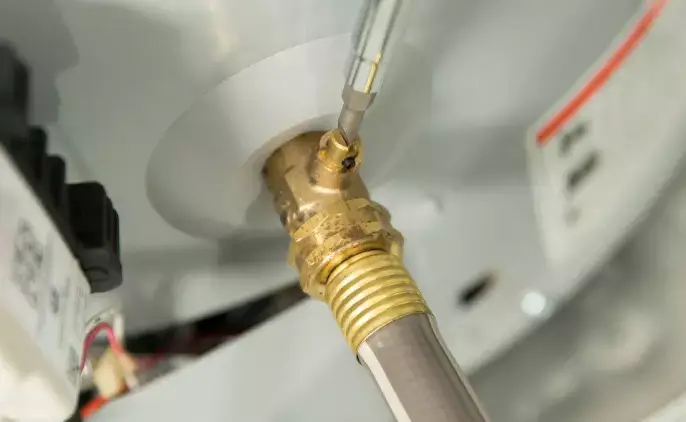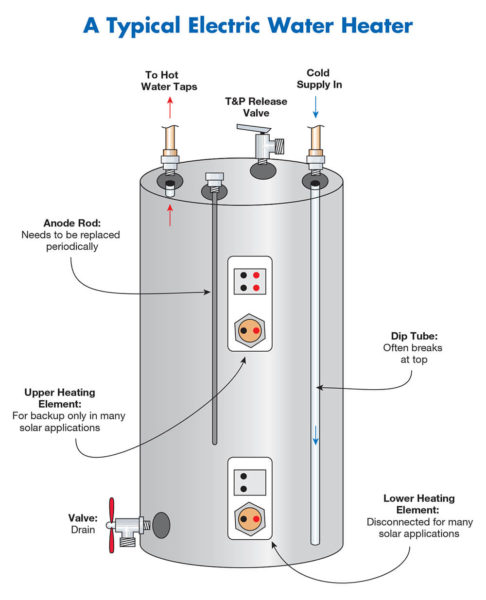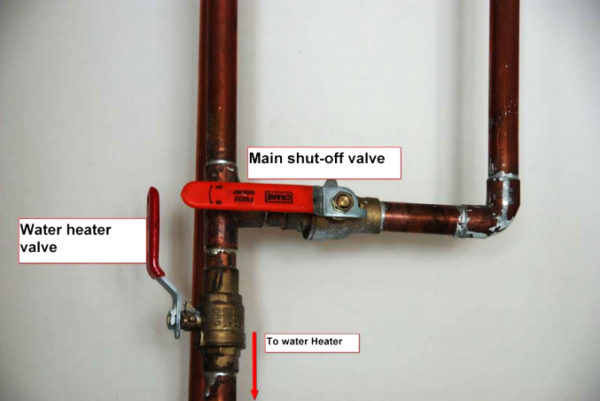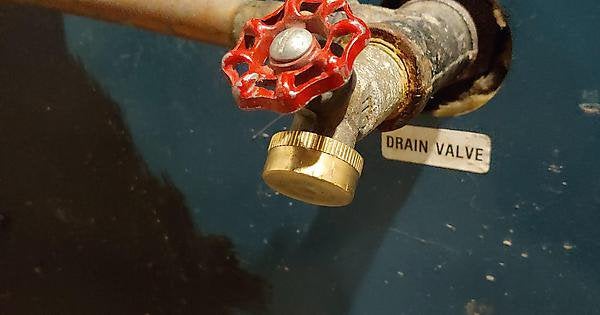For decades, the water heater has been playing a vital role in our households, making our life easy and comfortable. Its worth is often underestimated, unless and until it stops working, leaving the owners in a state of panic.
But what is the reason for its failed operation? It can be many, out of which the most common one is when with time the unit is suffused with minerals and elements.
These build-ups often damage the water heater, and so draining the heater, will help to restore its normalcy.
However, even the drain valve goes bad over time, making the cleaning and emptying process more difficult. So, how can you drain a water heater without a drain valve?

Simple, by following the below steps, the entire process becomes simple and easy. It is always the best idea to have a little knowledge of the home repairs so that you do not find yourself running for help for every petty thing.
So before this article takes you to the draining part, it is essential to know the operation of the system, and how it is possible to drain water even without a drain valve.
Important Parts of the Water Heater 2024
Table of Contents
By having knowledge of the heater parts, it will become easier for the owner to drain or repair the water heater.

They are as follows.
Flue Pipe – The prime purpose of the flue pipe is to release the poisonous gases that consist of carbon monoxide during the time of the combustion phase.
Draft Diverter – This fitting is found at the flue end that collects the varied gases which pass through the flue.
Temperature and Pressure Relief Valve – Excess pressure or heat is released from the tank so that it does not explode. Replace the part if found damaged.
Hot Water Outlet – It releases the hot water from the heater, which then enters into the portable water in the house.
Cold Water Shut Off Valve – It closes the cold water supply during the draining or replacement process.
Anti-corrosion Anode Rod – It is made from magnesium or aluminum with a strong steel core. It is connected to the cold water inlet that reaches the bottom of the tank. Its features are self-circulating which ensures the solid are not settled at the container bottom.
Drain Valve – It is found at the bottom of the water heater. It is one of the most important parts that help in draining the water from the tank.
Now that you are well aware of the functioning and parts of the heater, it is to time to move to the water draining process without the drain valve. For, this, you will require a few things, which are as follows.
Things to Need to Drain a Water Heater Without a Drain Valve 2024
Large Bucket – If there is no drain on the floor or if the hose is running short in length to reach the drain, then make sure you have a large bucket. The larger the bucket, the better it is, so that you can empty more water at a time.
Self-taping Serrated Inserts – If your drain valve is plastic, then you will need this material. It acts as a strong thread, making the drain removal process easy.
Screwdriver – Make sure your screwdriver is plat-tipped to unscrew the valve. Also, it will be helpful to remove the broken plastic from the drain valve.
Rug – This will help to soak up the water drippings and keep them tidy and dry.
Large-mouthed Funnel – It will collect and drain the water from the tank to the large bucket or into the drain.
Manual Drill and Bit – It is much safer so that you do not have to worry about electrocution.
Hose Pipe – It is to channel the drain water to the floor drain or into the bucket.
Hacksaw Blade – It creates grooves in the brass drain valve. You can use it to break or split the plastic drain valve.
Guide on How to Drain the Water Heater 2024
Turn Off the Power Supply
Turn off the water heater’s power supply, and if your heater is an electric one, then switch off the circuit breaker.
If it is a gas water heater, find the pilot knob of the system and switch to the pilot setting.
Switching to the pilot setting prevents burners ignition while the system is running.
The gas supply of the water heater also must be turned off by switching off the gas valve.
Tipsy Tip – The water heaters’ power supply must be turned off at least four hours prior to water draining. This will give the water enough time to cool, making it safer for you during the water draining process.
Turn Off Water Supply
The next step is to locate the cold water supply pipe.
The valve can be found along the line near the tank top.
It is better to close the main water supply valve of the house.

This would be much safer and easier, and it will close the valve of the hot water as well.
However, do so, only if there is none at home.
Tipsy Tip – On the top or side of the tank, you will find the temperature and pressure – T&P relief valve. Open the valve, so that the suction effect is prevented that may avert efficient draining.
Remove the Busted Drain Valve
The busted drain valve can be removed in two ways.
One, a self-tapping serrated screw can be inserted through the nipple, to block it. You can start this by getting your screwdriver and unscrewing the entire thing.

Next, a hole can be drilled through the plastic drain valve.
Make sure you use a manual drill so that electric shocks are avoided in case the water drips into the device.
Tipsy Tip – If the plastic drain valve is broken, then you can see off the small section with the help of a hacksaw blade. Then by using a flat-tipped screwdriver, pry the varied sections while using long-nosed pliers, so that it is easily removed.
If the drain valve of the heater is brass, then use a hacksaw blade to form a cross-shaped groove.
Make sure not to cut all the way to the thread. Then, the head of the screwdriver must be inserted into the groove, while turning it counterclockwise to loosen the drain valve.
Water Draining
To minimize flooding, a rug must be placed under the drain valve.
The hosepipe must be inserted through the funnel spout.
To start the emptying process, the hose’s one end must be placed in the large bucket or floor drain, while the other is into the drain valve.
Tipsy Tip – Get help from some members of the house and ask them to open the hot water faucet. This will push the air out.
Once the process is done, it concludes the water draining without a drain valve.
It is very essential to empty the water heater tank once in a while, as it removes the buildup of sediments while extending the service life of the system. This will guarantee optimum efficiency and functioning.
However, make sure to replace the drain valve of the water heater if it is broken, so that the draining process becomes easy and simple. Also, ignoring to replace the drain valve will soon affect the performance and efficiency of the unit.
Take a look at some of the common questions answered by the experts. They are as follows.
What to do if the water in the heater does not drain?
Once the clean water starts to come out, the drain valve must be turned off and the water valve opened. Then, the hose must be disconnected to allow the tank to be refilled with water.
If the water is struggling to drain, then it must be mostly because of air that’s been trapped in the system. Ask any member to open the hot water faucet, so that the trapped air is removed.
How often the water heater is drained?
For good performance, efficiency, and trouble-free operation, the water heater must be drained at least once a year.
Either get help from the professional and trained plumber or do it yourself, by following the above simple DIY method.
How to flush out the water heater?
The water valve must be opened for at least five minutes so that the water is flushed out.
The sediments are usually collected at the water heater’s bottom and so running fresh water through it, will help clean and clear the sediments out.
Is it safe to drill a hole in the water heater drain valve?
Yes, it is safe to drill a hole in the water heater drain valve, but you have to make sure to use a manual drain.
Avoid using an electric drill as there are high chances that it may give an electric shock that results from the water dripping.
Why is the water heater drain valve leaking?
The most common reason can be a weakened or worn inner washer.
No DIY can save you and the only option is the replacement.
Once you are done with the draining process, you can now be proud of yourself that you have fixed your heater without professional help. Now enjoy a dirt-free and sediment-free water heater for many good months.
However, make sure to consult with a professional at least once in 2-3 years for better and longer heater operation.
- How To Light A Propane Heater With A Lighter? - July 26, 2024
- How to Set up a Chessboard Position (With Images) - July 26, 2024
- How To Install a Tankless Water Heater - July 26, 2024

